What is a facelift?
A facelift, or rhytidectomy, is a surgical procedure that improves visible signs of aging in the face and neck, such as:
- Relaxation of the skin of the face causing sagging
- Deepening of the fold lines between the nose and corner of the mouth
- Fat that has fallen or has disappeared
- Jowls developing in the cheeks and jaw
- Loose skin and excess fat of the neck that can appear as a double chin or “turkey neck”
The loss of youthful contours in the face can be due to variety of factors, including thinning of the skin, loss of facial fat, gravity, sun damage, smoking, as well as heredity and stress.
Other procedures that might be performed in conjunction with a facelift are brow lift and eyelid surgery to rejuvenate aging eyes. Fat transfer or fillers may be suggested to replace the lost fatty volume. Skin treatments such as IPL, dermabrasion, peels or laser may be offered to improve the quality and texture of the skin.
What facelift surgery can’t do
As a restorative surgery, a facelift does not change your fundamental appearance and cannot stop the aging process.
A facelift can only be performed surgically; minimally invasive rejuvenation treatments cannot achieve the same results, but may help delay the time at which a facelift becomes appropriate and complement the results of surgery.
Some minimally invasive treatments, such as stem cell facelifts, are of unproven benefit.
Who is a good candidate for breast lift surgery?
Breast lift surgery is a highly individualized procedure. You should do it for yourself, not to fulfill someone else’s desires or to try to fit any sort of ideal image.
Who is a good candidate for breast lift surgery?
You may be a candidate for breast lift surgery if:
- You are physically healthy and maintain a stable weight
- You do not smoke
- You are bothered by the feeling that your breasts sag or have lost shape and volume
- Your breasts have a flatter, elongated shape or are pendulous
- When unsupported, your nipples fall below the breast crease
- Your nipples and areolas point downward
- You have stretched skin and enlarged areolas
- One breast is lower than the other
What should I expect during a consultation for a facelift?
During your facelift consultation be prepared to discuss:
- Your surgical goals
- Medical conditions, drug allergies and medical treatments
- Current medications, vitamins, herbal supplements, alcohol, tobacco and drug use
- Previous surgeries
Your surgeon will also:
- Evaluate your general health status and any pre-existing health conditions or risk factors
- Discuss your facelift options
- Examine and measure your face
- Take photographs
- Recommend a course of treatment
- Discuss likely outcomes of a facelift and any risks or potential complications
- Discuss the type of anesthesia that will be used
The consultation is the time to ask your plastic surgeon questions. To help, we have prepared a checklist of questions to ask your facelift surgeon that you can take with you to your consultation.
It’s important to understand all aspects of your facelift surgery. It’s natural to be nervous about it, whether it’s excitement for your anticipated new look or a bit of preoperative stress. Don’t be shy about discussing these feelings with your plastic surgeon.
What questions should I ask my plastic surgeon about facelift surgery?
Use this checklist during your facelift consultation:
- Are you certified by the American Board of Plastic Surgery?
- Were you specifically trained in the field of plastic surgery?
- How many years of plastic surgery training have you had?
- Do you have hospital privileges to perform this procedure? If so, at which hospitals?
- Is the office-based surgical facility accredited by a nationally- or state-recognized accrediting agency, or is it state-licensed or Medicare-certified?
- Am I a good candidate for this procedure?
- What will be expected of me to get the best results?
- Where and how will you perform my procedure?
- What surgical technique is recommended for me?
- How long of a recovery period can I expect, and what kind of help will I need during my recovery?
- What are the risks and complications associated with a facelift?
- How are complications handled?
- How can I expect my face to look over time?
- What are my options if I am dissatisfied with the cosmetic outcome of my facelift?
- Do you have before-and-after photos I can look at for this procedure and what results are reasonable for me?
What are the risks of facelift surgery?
The decision to have plastic surgery is extremely personal and you will have to weigh the potential benefits in achieving your goals with the risks and potential complications of facelift surgery. Only you can make that decision for yourself.
You will be asked to sign consent forms to ensure that you fully understand the procedure and any risks and potential complications.
Facelift risks, while rare, include:
- Anesthesia risks
- Bleeding
- Infection
- Poor wound healing and skin loss
- Facial nerve injury with weakness
- Temporary or permanent hair loss at the incisions
- Fluid accumulation
- Numbness or other changes in skin sensation
- Persistent pain
- Unfavorable scarring
- Prolonged swelling
- Skin irregularities and discoloration
- Sutures may spontaneously surface through the skin, become visible or produce irritation that require removal
- Unsatisfactory results may include: asymmetry, unsatisfactory surgical scar location and unacceptable visible deformities at the ends of the incisions. (It may be necessary to perform an additional surgery to improve your results)
- Deep vein thrombosis, cardiac and pulmonary complications
These risks and others will be fully discussed prior to your consent. It is important that you address all your questions directly with your plastic surgeon.
How should I prepare for a facelift?
In preparing for a facelift, you may be asked to:
- Get lab testing or a medical evaluation
- Take certain medications or adjust your current medications
- Apply certain products to the facial skin preoperatively
- Stop smoking
- Avoid taking aspirin, anti-inflammatory drugs and herbal supplements as they can increase bleeding and bruising
A facelift may be performed in an accredited office-based surgical facility, licensed ambulatory surgical center, or a hospital. You must arrange for a friend or family member to drive you to and from surgery and to stay with you the first night following surgery.
What are the steps of a facelift procedure?
A facelift procedure includes the following steps:
Step 1 – Anesthesia
Medications are administered for your comfort during the surgical procedure. The choices include intravenous sedation and general anesthesia. Your doctor will recommend the best choice for you.
A variety of other procedures can further enhance the outcome of a facelift. They include:
- Facial implants or fat transfer to improve contour
- Resurfacing techniques to improve the tone and texture of facial skin
- Wrinkle reduction by injection of fat or fillers
Step 2 – The incision
Depending on the degree of change you’d like to see, your facelift choices include a traditional facelift, limited incision facelift or a neck lift.
A traditional facelift incision often begins in the hairline at the temples, continues around the ear and ends in the lower scalp. Fat may be sculpted or redistributed from the face, jowls and neck and underlying tissue is repositioned, commonly the deeper layers of the face and the muscles are also lifted. Skin is redraped over the uplifted contours and excess skin is trimmed away.
A second incision under the chin may be necessary to further improve an aging neck. Sutures or skin adhesives close the incisions.
Traditional Facelift
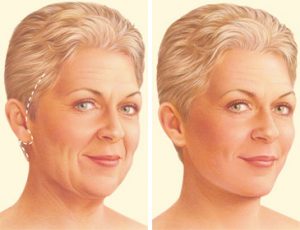
An alternative to a traditional facelift uses shorter incisions at the temples, continuing around the ear. “Mini-lifts” are usually reserved for patients with less skin relaxation, as the results are less rejuvenating than a full facelift.
Limited Incision
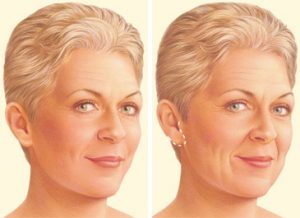
A necklift addresses the sagging jowls, loose neck skin and fat accumulation under the chin. The neck lift incision often begins in front of the ear lobe and wraps around behind the ear, and ends in the posterior hair behind the ear.
Neck Lift

Step 3 – Closing the incisions
The incisions will be closed with sutures that may dissolve or may need to be removed after a few days. Some surgeons use skin glues to seal the incisions. Once healed, the incision lines from a facelift are well concealed within the hairline and in the natural contours of the face and ear.
Step 4 – See the results
The visible improvements of a facelift appear once swelling and bruising subside. Your final result should not only restore a more youthful and rested appearance, but also help you feel more confident about yourself. Get more information about facelift results.
What should I expect during my facelift recovery?
Following completion of a facelift, a bandage might be placed around your face to minimize swelling and bruising. Small tubes may be present to draw off any excess blood or fluid.
You will be given specific instructions on how to care for the surgical site and drains, medications to apply or take orally, specific concerns to look for at the surgical site or in your general health and when to follow up with your plastic surgeon.
Be sure to ask your plastic surgeon specific questions about what you can expect during your recovery period.
- Where will I be taken after my surgery is complete?
- What medication will I be given or prescribed after surgery?
- Will I have dressings/bandages after surgery?
- When will they be removed?
- When will the stitches be removed?
- When can I wash my face and wear make-up?
- When can I resume normal activity and exercise?
- When can I color my hair or get a haircut?
What results should I expect after a facelift?
While most people are presentable to the public within 10-14 days, it will take 2-3 months for the face to feel “back to normal” in terms of texture, sensibility and loss of tightness.
Continuing daily sun protection and a healthy lifestyle will help extend the results of your facelift.
As swelling and bruising subside, the visible improvements of a facelift appear. Your final result should not only provide a more youthful and rested appearance, but also help you feel more confident about yourself.
Although good results are expected, there can be no guarantee. In some situations, it may not be possible to achieve optimal results with a single surgical procedure and another surgery may be necessary.
Follow your physician’s instructions to ensure the success of your surgery.
Facelift Before & After Photos
View before and after photos of facelift procedures performed by members of the American Society of Plastic Surgeons.
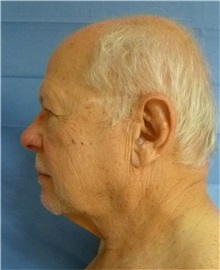 | 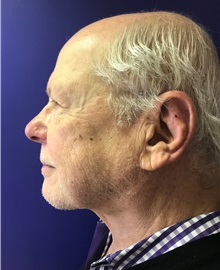 | 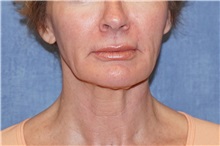 | 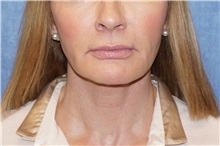 |
 |  |  | 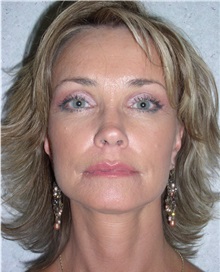 |
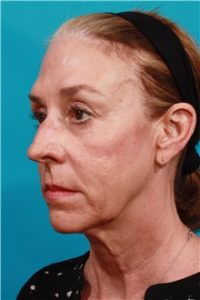 |  | 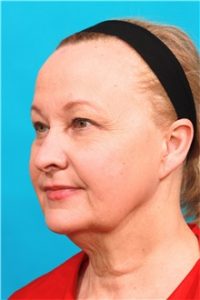 |  |
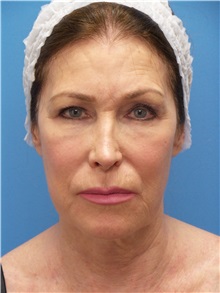 | 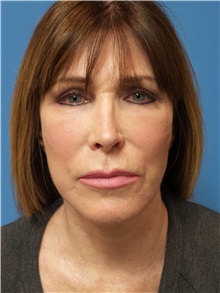 | 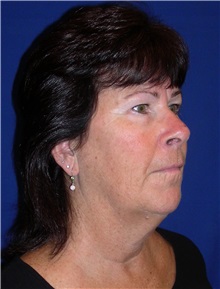 | 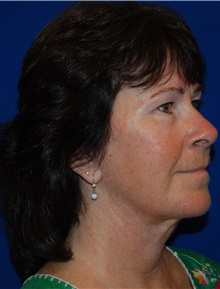 |
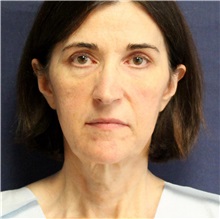 | 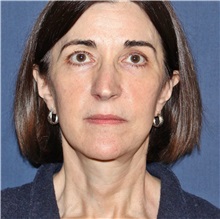 | 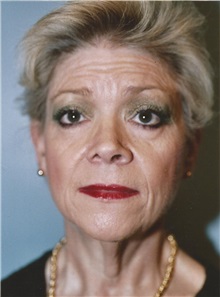 |  |
What words should I know about facelift surgery?
Anesthesia
Drugs and/or gases used during an operation to relieve pain and alter consciousness.
Hematoma/Seroma
Blood pooling beneath the skin.
Intravenous sedation
Sedatives administered by injection into a vein to help you relax.
Tear trough
Deep creases below the lower eyelids.
Nasolabial fold
Deep creases between the nose and cheek
Jowls
Relaxed skin at the sides of the chin.
Local anesthesia
Medication injected directly to the incision during an operation to numb the skin.
Rhytidectomy (removal of wrinkles)
Also known as facelift, reduces sagging of the mid-face, jowls and neck.
SMAS
Submuscular aponeurotic sheath: tissue under the skin, overlying the facial muscles, that is often repositioned in a facelift to improve contours.
Subperiosteal
A technique with a deeper dissection to elevate the cheek tissue to improve contours.
How do I choose a plastic surgeon for a facelift?
Facelift surgery involves many choices. The first and most important is selecting a board-certified plastic surgeon you can trust who is a member of the American Society of Plastic Surgeons (ASPS).
ASPS member surgeons meet rigorous standards:
- Board certification by the American Board of Plastic Surgery® (ABPS) or in Canada by the Royal College of Physicians and Surgeons of Canada®
- Complete at least six years of surgical training following medical school with a minimum of three years of plastic surgery residency training
- Pass comprehensive oral and written exams
- Graduate from an accredited medical school
- Complete continuing medical education, including patient safety, each year
- Perform surgery in accredited, state-licensed, or Medicare-certified surgical facilities
Do not be confused by other official-sounding boards and certifications.
The ABPS is recognized by the American Board of Medical Specialties (ABMS), which has approved medical specialty boards since 1934. There is no ABMS recognized certifying board with “cosmetic surgery” in its name.
By choosing a member of the American Society of Plastic Surgeons, you can be assured that you are choosing a qualified, highly-trained plastic surgeon who is board-certified by the ABPS or the Royal College of Physicians and Surgeons of Canada.
